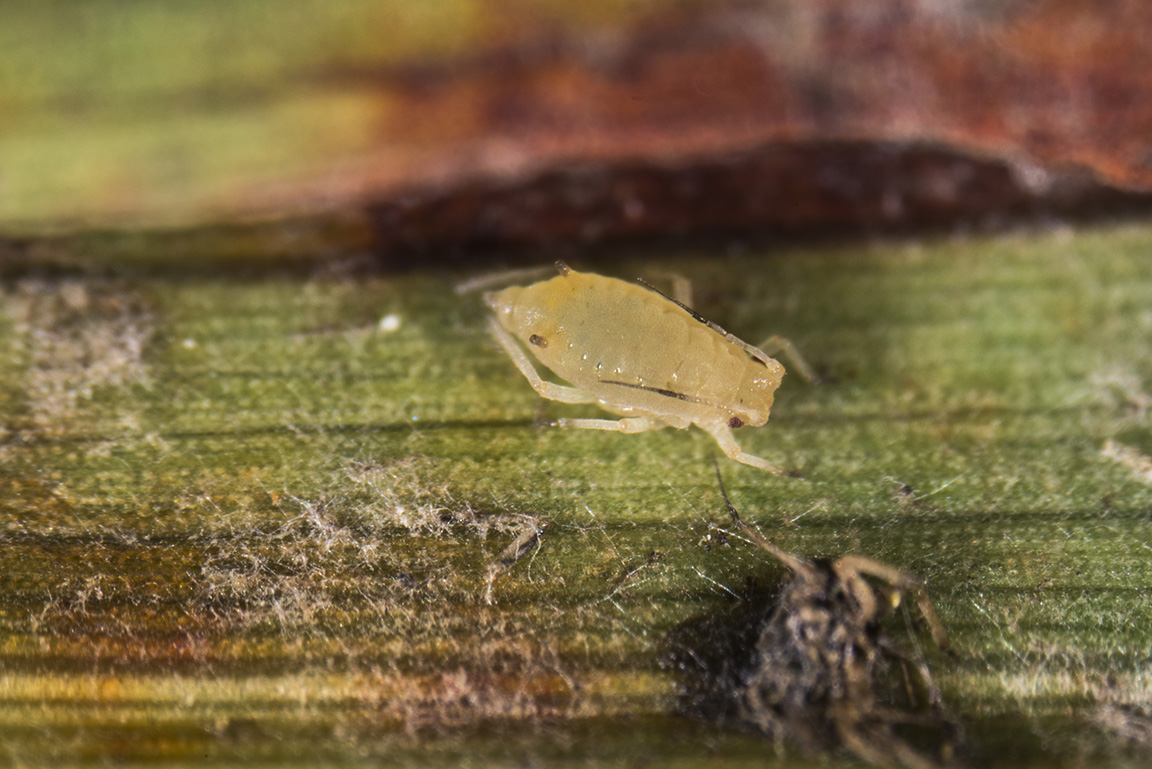The sugarcane aphid (Melanaphis sacchari), a relatively new pest of grain sorghum, forage sorghums, sudangrass, sorghum-sudangrass hybrids and Johnson grass, first detected in Indiana in 2016, is making its presence known primarily in southcentral and southwestern counties. Indiana is at the northern edge of its current range, so it is currently not a widespread or serious pest, but it is worth paying attention to for growers in the southern part of the state.
This pest was first detected in the US on sorghum in 2013. This is a late season pest and now is the time to be actively scouting fields and pastures. This aphid can be separated from other aphids found in sorghum by its grey, tan, or pale yellow body contrasted with feet, antennae and cornicles (things that look like two tailpipes at the end of the body) that are all black. Like most aphids, this pest has the potential to produce clones and rapidly increase in abundance when conditions are favorable.
Crop injury is characterized by wilting and yellowing (with possible plant death) of stems and leaves due to the feeding by this piercing/sucking type of insect. Yields can be significantly reduced when aphid numbers are high. Additionally, the accumulation of aphid excrement called honeydew and the molds that grow on it can interfere with harvest activities.

Close-up of sugarcane aphid, note the black tipped “feet,” antennae, and cornicles (“tail pipes”). (Photo Credit: John Obermeyer)
Fields should be scouted every three to four days starting in mid-August. Treatment thresholds are not well established, but data from Clemson University suggests treatment at “20% [of] plants infested with localized areas of heavy honeydew and established aphid colonies until boot [stage]. After boot and until dough stage, a threshold of 30% plants infested is to be considered.”
Products labeled for control are limited. Sefina (BASF) recently received EPA approval in sorghum for aphid control, it has been used in Southwest States, though we have no experience with this product and efficacy in the Midwest. Pyrethroids should be avoided as they will reduce natural enemies and cause the aphids to rebound quickly. Texas A&M suggests “An alternative to insecticide treatment may be grazing or early harvest.”
Further resources:
“Sugarcane Aphid and Potential Strategies for Control” (University of California, Davis)
“Grain Sorghum Insect Control” (Clemson)
“Forage Sorghum Insects” (Texas A&M)



